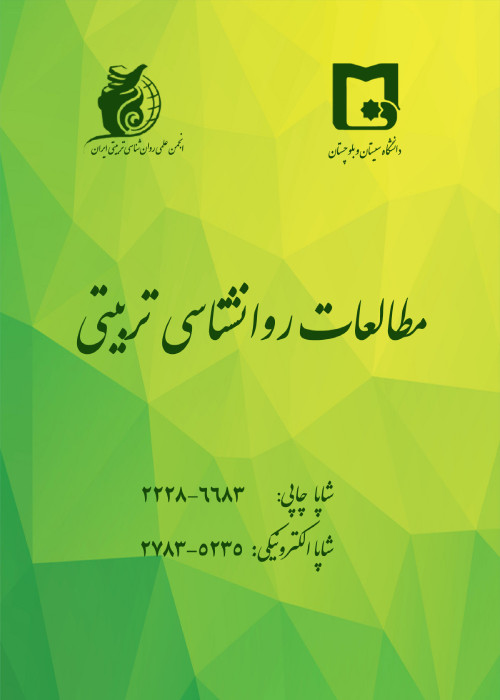University Students’ Perception about the Rate of Learning through Virtual Education during the COVID-19 Pandemic and it Comparison with Face-to-Face Education
Author(s):
Article Type:
Research/Original Article (دارای رتبه معتبر)
Abstract:
According to the UNESCO’s 2020 report on the state of education in different countries of the world due to the Covid-19 pandemic, more than 195 countries have been forced to stop their educational activities at different times, which is equivalent to 91% or 1.6 billion students. This study aimed to investigate the rate of students' learning through virtual education in the Covid-19 pandemic and compare it with face-to-face education.The study method was descriptive cross-sectional and the target population of all second to fourth year students of University of Sistan and Baluchestan in the year 1400 was over 15,000 subjects. 375 students (154 boys and 222 girls) were selected as the sample population using Singh and Masuku sample size determination table. A researcher-made questionnaire in a five-choice Likert scale was used to collect data. Statistical methods such as, paired and independent t-test, analysis of variance, and Bonferroni post hoc test were used for statistical analysis of data. The software used was SPSS21. The results showed that the effectiveness of face-to-face education in the field of cognition was relatively good (3.82±1.13) and concerning virtual education was relatively moderate (2.84±1.05). Also, the effectiveness of face-to-face classes in the emotional field has been relatively good (3.64±1.13) and concerning virtual education has been lower than average (2.84±1.05), and at the same time the effectiveness of face-to-face classes in the field of competence (social-communication skills) has been good (3.80±1.09) and in communication with e-learning has been below average (2.71±1.12). In all three domains of cognitive, emotional, social skills, a significant difference was observed at the level of P≤01 between the two educational approaches. The amount of students' academic activities during virtual education was relatively less compared to face-to-face education. Due to the unwanted experience of the Covid-19 pandemic, it seems that educational centers at all levels, especially higher education, should design and implement coherent and rapid measures and programs to familiarize students with information technology related to virtual education to make such a course effective.
Keywords:
Language:
Persian
Published:
Journal of Educational Psychology Studies, Volume:19 Issue: 46, 2022
Pages:
145 to 160
magiran.com/p2514384
دانلود و مطالعه متن این مقاله با یکی از روشهای زیر امکان پذیر است:
اشتراک شخصی
با عضویت و پرداخت آنلاین حق اشتراک یکساله به مبلغ 1,390,000ريال میتوانید 70 عنوان مطلب دانلود کنید!
اشتراک سازمانی
به کتابخانه دانشگاه یا محل کار خود پیشنهاد کنید تا اشتراک سازمانی این پایگاه را برای دسترسی نامحدود همه کاربران به متن مطالب تهیه نمایند!
توجه!
- حق عضویت دریافتی صرف حمایت از نشریات عضو و نگهداری، تکمیل و توسعه مگیران میشود.
- پرداخت حق اشتراک و دانلود مقالات اجازه بازنشر آن در سایر رسانههای چاپی و دیجیتال را به کاربر نمیدهد.
In order to view content subscription is required
Personal subscription
Subscribe magiran.com for 70 € euros via PayPal and download 70 articles during a year.
Organization subscription
Please contact us to subscribe your university or library for unlimited access!



